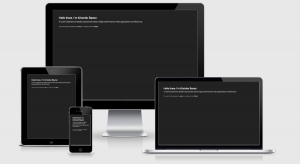
RWD Weekly #407 Interview Series Kristopher Baxter
Hello and welcome to RWD Weekly Newsletter edition #407 and the continuation of the interview series.
Each week I pose the same seven questions to a range of different folks working in our industry and we get to hear their opinions based on their own experiences working on the web.
This week we continue with Kristopher Baxter, a User Experience leader focused on web technologies who is passionate about high performance web application architecture. Currently at Google, Kristopher previously also worked at Linked In and Netflix as a Senior Engineering Manager responsible for web frameworks, performance and UI.
Just a note on the answers below, Kristopher didn’t include any of the links below but there were some interesting ideas which I’d added links to resources/sites/articles which can provide additional details. If you want to know more, hit up Kristopher on twitter with any questions.
Without further ado, Kristopher.
How do you find working with clients these days? Is responsive something that you have to sell in any more or does everyone get it now?
Perhaps I’m a bit of an oddity here since I don’t work with clients much. Instead I focus on assisting frameworks and libraries on behalf of end-users.
At this point it’s a shock to find highly divergent pages, and from my analysis responsive design has tipped over into the expected category.
What is it now that you find the hardest when speaking with clients from a website build point of view, and how do you go about explaining why it is important?
Conveying a web experience on anything but the hardware a developer or a specific end-user has. It’s far too easy to accidentally create an experience that works well on a high-end modern phone and decent LTE connection, but falls over spectacularly once out of its comfort zone.
Lately we made a significant switch and changed our development practices, demo opportunities, and even our PR process to use the exact same mid-to-low end device with decent performance. If we can impress on these devices, we deliver amazing experiences on the higher-end ones.
So much has changed since Ethan’s eureka moment, what are your go to implementation methods for responsive sites? How do you handle layout, typography, images, video etc?
Abstractions have a cost, but dramatically reduce the cost and time to deliver an experience. I find the tools provided by Next.js quite great, as well as 11ty, and Cloudflare for fronting documents.
For handling layout, typography, and friends? Still rely on individual creation of components specific to the domain, but with more common patterns provided by abstractions frequently used.
What are the top three issues you’re still facing when building a responsive site?
We’re missing three primitives that would fix most of the issues I encounter:
- Container Queries (podcast, origins, article)
- Scoped Light DOM Queries
- Declarative Animations off the main thread
We started off with lots of m.dot.sites when mobile arrived. Google was a huge part of changing that approach by saying that all content should be found on a single URL. One true source. In recent years Google have incentivised the AMP Framework as a way to provide a new/better experience to mobile users. What are your thoughts?
*Disclaimer*
: I am a member of the AMP Project. (One of the many reasons why I wanted Kristopher to take part – Ed)
Personally I don’t see a large disconnect between AMP’s vision/mission and what’s great for the web.
The AMP Project aims to provide a user-first format for web content supporting the long-term success of every web publisher, merchant, and advertiser. This format can be the singular URL for a document, or a paired document with the same feature-set.
At the end of the day, we create documents for people to read, interact with and enjoy (or maybe purchase something too). Using AMP is a way to produce these documents while hopefully removing some complexity from the front-end code. Additionally it provides a baseline of established performance and stability across billions of documents.
As a business/product owner, what is the most frustrating thing you find trying to take a product out across today’s diverse device landscape?
Ignoring device and network performance, it seems like we as an industry are in a great place. Adaptive styles for different screen capabilities is the default (as far as I can tell) and creating beautiful functional sites for mobile devices is easier than ever.
However, we are still neglecting a large portion of the user base by over relying on JavaScript instead of HTML/CSS. The cost of JavaScript is far higher than other parts of the Web Platform, no matter how friendly our abstractions have made it.
The most frustrating part of launching a new product is watching it fail on devices that weren’t targeted during the development process and missing out on sharing the worlds best information with a receptive audience.
Prediction time. What are we going to see towards the end of 2020 and into 2021?
A focus on the performance of our favorite frameworks and technologies on key trackable metrics. A return to using CSS to solve presentational concerns.
And lastly, more JavaScript, much more JavaScript.
Thank you so much for your time, if our readers want to learn more where can they track you down?
I mostly chat about Web Performance on twitter (@kristoferbaxter). Always happy to speak with anyone there. Kris



